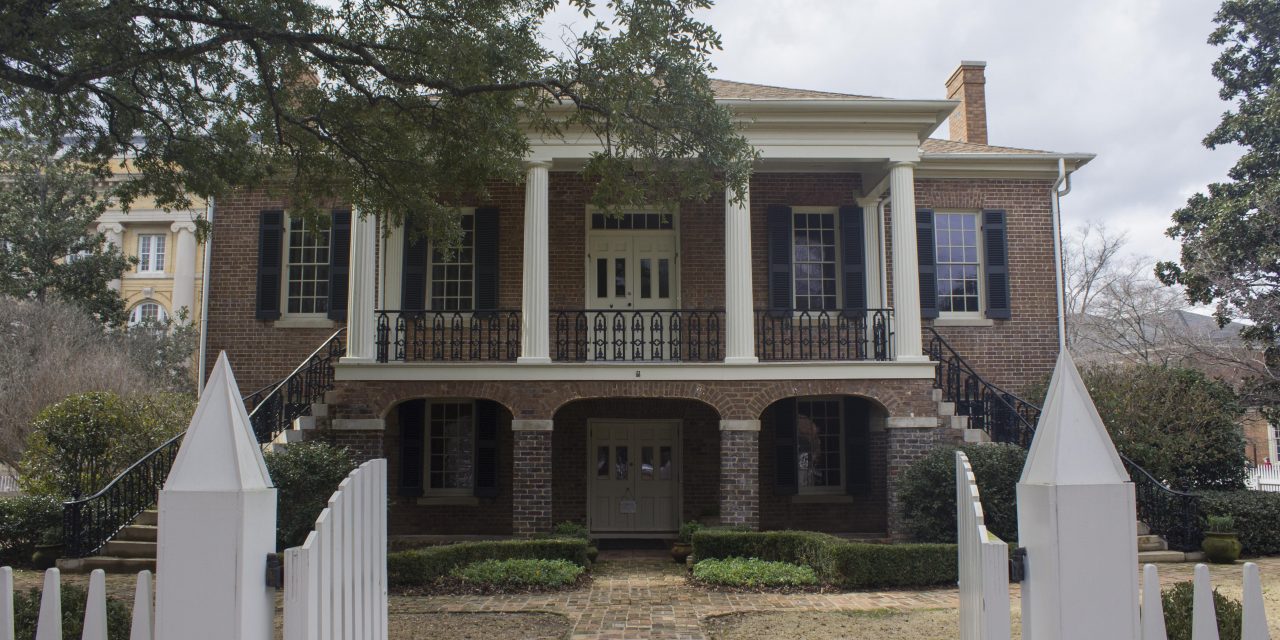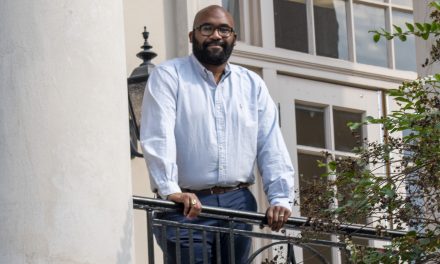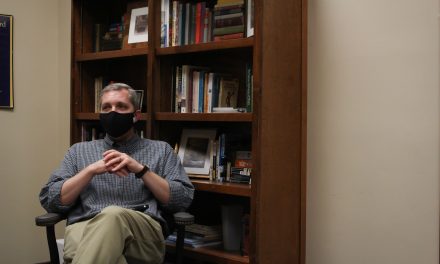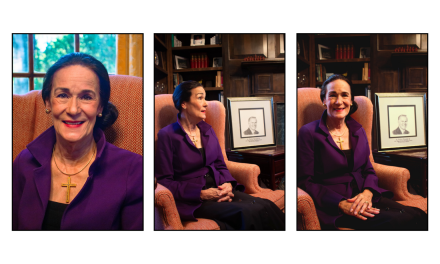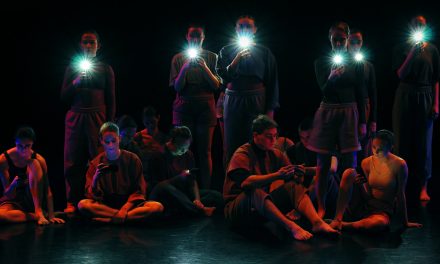Burning Alabama
Soldiers orders that day were to destroy UA
On April 4, 1865, our campus was deliberately burned to the ground.
Only five days before Robert E. Lee’s surrender, Union troops rode into Tuscaloosa with orders to wipe out The University of Alabama by fire. And they almost did. A few buildings remained, but the University refused to die. Published research shows us our history at that time.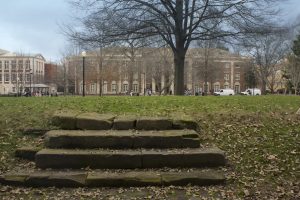
Construction of UAfirst began in 1828, and officially opened to students in April of 1831. The campus was designed by English Architect William Nichols, who based the original campus largely off of Thomas Jefferson’s campus plans for the University of Virginia. Designed in a Classical Revival style, Nichols’ campus plan was heavily influenced by Greek and Roman architecture.
The plan included a main axis containing classroom buildings and a dining hall, adjoined by two rows of dormitories, and at the center was the Rotunda, according to Suzanne Wolfe, founder of Alabama Heritage magazine A domed building that served as the hub for the University’s academic community, the Rotunda contained the campus’ natural history collection and library. Nichols’ plan also included faculty housing, a stewards hall, and the Lyceum, which contained laboratories and classrooms and four large dormitories (Washington, Jefferson, Franklin and Madison).
The University of Alabama converted to a military-style institution in 1860 under President Landon C. Garland in response to a long-standing issue with student behavior. When the Civil War started in 1861, many students wanted to join the ranks to fight in the war, much to President Garland’s dismay.
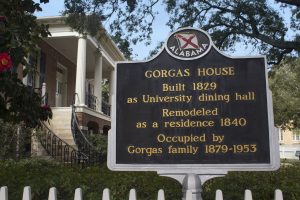 “Young men flocked to the campus to prepare for their part in the conflict,” Wolfe said. “They stayed long enough to learn the rudiments of military life, then left to join the companies being formed.”
“Young men flocked to the campus to prepare for their part in the conflict,” Wolfe said. “They stayed long enough to learn the rudiments of military life, then left to join the companies being formed.”
At the end of March 1865, Union forces led by Major General James H. Wilson started to march south from northern Alabama. On March 30, 1865, Major General Wilson gave a direct order to Brigadier General John T. Croxton, “to proceed rapidly by the most direct route to Tuscaloosa to destroy the bridge, factories, mills, university (military school), and whatever else may be of benefit to the rebel cause.”
On the morning of April 4, 1865, Croxton’s force of 1,500 men approached “The University of Alabama as it would never be again,” wrote Clark Center in an article for Alabama Heritage 1990-91. The Union forces marched with orders to destroy the university and they did, burning down a majority of the buildings on campus.
The Rotunda was the first building to be targeted by Union troops who threw flaming combustibles into it, destroying a majority of the 7,000 prized volumes in UA’s library. Today, all that remains of the building are pieces of its ionic capitals which are now located in the W. S. Hoole Special Collections Library, and the Rotunda plaza in front of Amelia Gayle Gorgas Library. The Rotunda plaza was made up of what was left of the building’s foundations.
Washington, Jefferson, Franklin and Madison Hall,the student dormitories, were all destroyed in the campus burning. The remains of Franklin Hall exist today at what is now called “The Mound.” which was fashioned over the rubble that was left after it was destroyed. Mounds were fashioned over most of the sites of destroyed buildings after the Civil War, but were removed during the expansion of campus — except for Franklin Hall.
Remains of Madison Hall also exist on the Quad, opposite The Mound. At one point it had existed as a mound but now has a 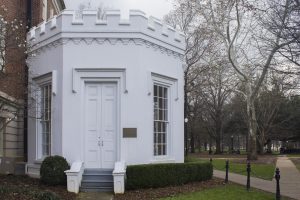 brick marker indicating its site. The other two dormitories lie beneath what is now Capstone Drive.
brick marker indicating its site. The other two dormitories lie beneath what is now Capstone Drive.
Only four buildings that survived the campus burning in 1865 remain today, including are the Roundhouse, Maxwell Hall, the President’s Mansion and Gorgas House.
The Roundhouse, formerly known as the Guardhouse, was built in 1862. It was the first building that reflected the University’s change to a military institution and existed purely for a militaristic purpose. The cadets were required to keep guard at night, so the Guardhouse was built to house them during times of inclement weather. The building is located next to Amelia Gayle Gorgas Library and is the home to University honor society memorials.
Maxwell Hall was called the Observatory until its renaming in 1986. It was built in 1844 and was the University’s Observatory for astronomy. It contained many astronomical instruments, many of which were taken by Union soldiers as souvenirs during their raid in 1865. The Observatory is said to have been saved by Mrs. Rueben Chapman, who was able to convince Union soldiers not to burn it with the argument that it could not contribute in any way to the Confederate cause. Maxwell Hall is now the home to the Creative Campus Initiative.
The President’s Mansion was built 1839-1841 as a home for the new president and his family. The mansion narrowly escaped destruction during the campus burning, thanks to Mrs. Garland, wife of President Landon Garland. Mrs. Garland and her children had fled prior to the Union attack on campus, finding refuge at the Alabama Insane Hospital which is now Bryce, part of the UA campus. After Mrs. Garland heard that the Union soldiers were burning the campus, she rushed back to save her home. When she got to the President’s Mansion, Garland found soldiers lighting her furniture on fire. She promptly convinced them to put the fires out and leave the home alone, as it was a private dwelling.
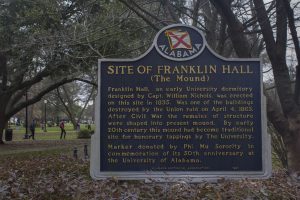 Gorgas House was the first building built on the original campus, and is the only surviving building of Nichols original campus plan. Gorgas house has been formerly called “The Hotel,” the “Stewards Hall” and “Pratt House.” It has served multiple purposes on campus, as a hotel, a student dining hall and faculty residence throughout its existence. The building is a public museum that contains the possessions and memorabilia of the Gorgas family.
Gorgas House was the first building built on the original campus, and is the only surviving building of Nichols original campus plan. Gorgas house has been formerly called “The Hotel,” the “Stewards Hall” and “Pratt House.” It has served multiple purposes on campus, as a hotel, a student dining hall and faculty residence throughout its existence. The building is a public museum that contains the possessions and memorabilia of the Gorgas family.
The campus we know today is very different from the one it was when the University first opened. The remains of the campus buildings serve as a reminder of the UA’s past, one that we have grown and learned from.
After the destruction the campus witnessed at the hands of Union troops, the University had to start over. They had no dormitories, no dining halls, and no classrooms. They had no choice but to close the University, but they would not give up so easily. Seven years after its destruction UA was once again open to students, slowly building itself into the diverse and prestigious institution it is today.
Sources:
Robert O. Mellown. The University of Alabama: A Guide to the Campus and its Architecture. Univ. of Ala. Press, 2013.
Suzanne R. Wolfe. The University of Alabama: A Pictorial History. Univ. of Ala. Press, 1983.
Clark Center, “The Burning of the Univ. of Ala.” Alabama Heritage (Spring 1990)

